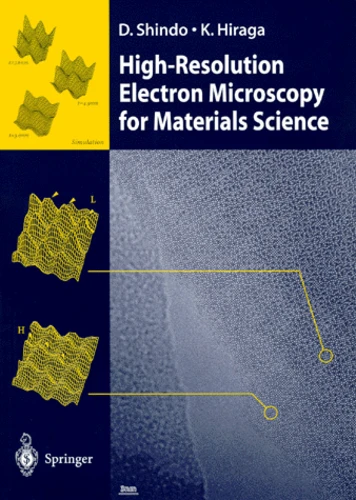HIGH-RESOLUTION ELECTRON MICROSCOPY FOR MATERIALS SCIENCE
Par : ,Formats :
- Paiement en ligne :
- Livraison à domicile ou en point Mondial Relay indisponible
- Retrait Click and Collect en magasin gratuit
- Réservation en ligne avec paiement en magasin :
- Indisponible pour réserver et payer en magasin
- Nombre de pages189
- PrésentationBroché
- Poids0.61 kg
- Dimensions19,4 cm × 27,0 cm × 1,0 cm
- ISBN4431702342
- EAN9784431702344
- Date de parution18/12/1998
- ÉditeurSpringer
Résumé
High-resolution electron microscopy (MREM) has become a most powerful method for investigating the internal structure of materials on an atomic scale of around 0.1 nm. The authors clearly explain both the theory and practice of HREM for materials science. In addition to a fundamental formulation of the imaging process of HREM, there is detailed explanation of image simulation-indispensable for interpretation of high-resolution images. Essential information on appropriate imaging conditions for observing lattice images and structure images is presented, and methods for extracting structural information from these observations are clearly shown, including examples in advanced materials. Dislocations, interfaces, and surfaces are dealt with, and materials such as composite ceramics, high-Tc superconductors, and quasicrystals are also considered. Included are sections on the latest instruments and techniques, such as the imaging plate and quantitative HREM.
High-resolution electron microscopy (MREM) has become a most powerful method for investigating the internal structure of materials on an atomic scale of around 0.1 nm. The authors clearly explain both the theory and practice of HREM for materials science. In addition to a fundamental formulation of the imaging process of HREM, there is detailed explanation of image simulation-indispensable for interpretation of high-resolution images. Essential information on appropriate imaging conditions for observing lattice images and structure images is presented, and methods for extracting structural information from these observations are clearly shown, including examples in advanced materials. Dislocations, interfaces, and surfaces are dealt with, and materials such as composite ceramics, high-Tc superconductors, and quasicrystals are also considered. Included are sections on the latest instruments and techniques, such as the imaging plate and quantitative HREM.

